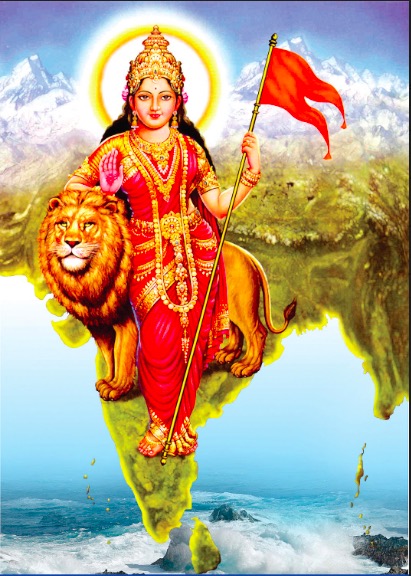The image of Bharat Mata formed with the Indian independence movement of the late 19th century. A play by Kiran Chandra Bandyopadhyay, Bharat Mata, was first performed in 1873. Bankim Chandra Chattopadhyay's 1882 novelAnandamath introduced the hymn "Vande Mataram" which soon became the song of the emerging freedom movement in India. Abanindranath Tagoreportrayed Bharat Mata as a four-armed Hindu goddess wearing saffron colored robes, holding a book, sheaves of rice, a mala, and a white cloth.
In 1936, a Bharat Mata temple was built in Benaras by Shiv Prashad Gupt and was inaugurated by Mohandas Gandhi. Mahatma Gandhi said, "I hope this temple, which will serve as a cosmopolitan platform for people of all religions, castes, and creeds including Harijans, will go a great way in promoting religious unity, peace, and love in the country.
As the conception of Bharat Mata predates the partition of India, she is intended as representing "Aryavarta", the motherland of Hinduism in Hindu nationalism, not restricted to the secular Republic of India, and Bharat Mata remains a symbol of the "vision of a unified motherland" in Hindu nationalist irredentism. A Bharat Mata temple in Haridwar was built by in 1983 by Vishwa Hindu Parishad (VHP).
The depiction of India as a Hindu goddess implies that it is not just the patriotic but also the religious duty of all Indians to participate in the nationalist struggle to defend the nation.





